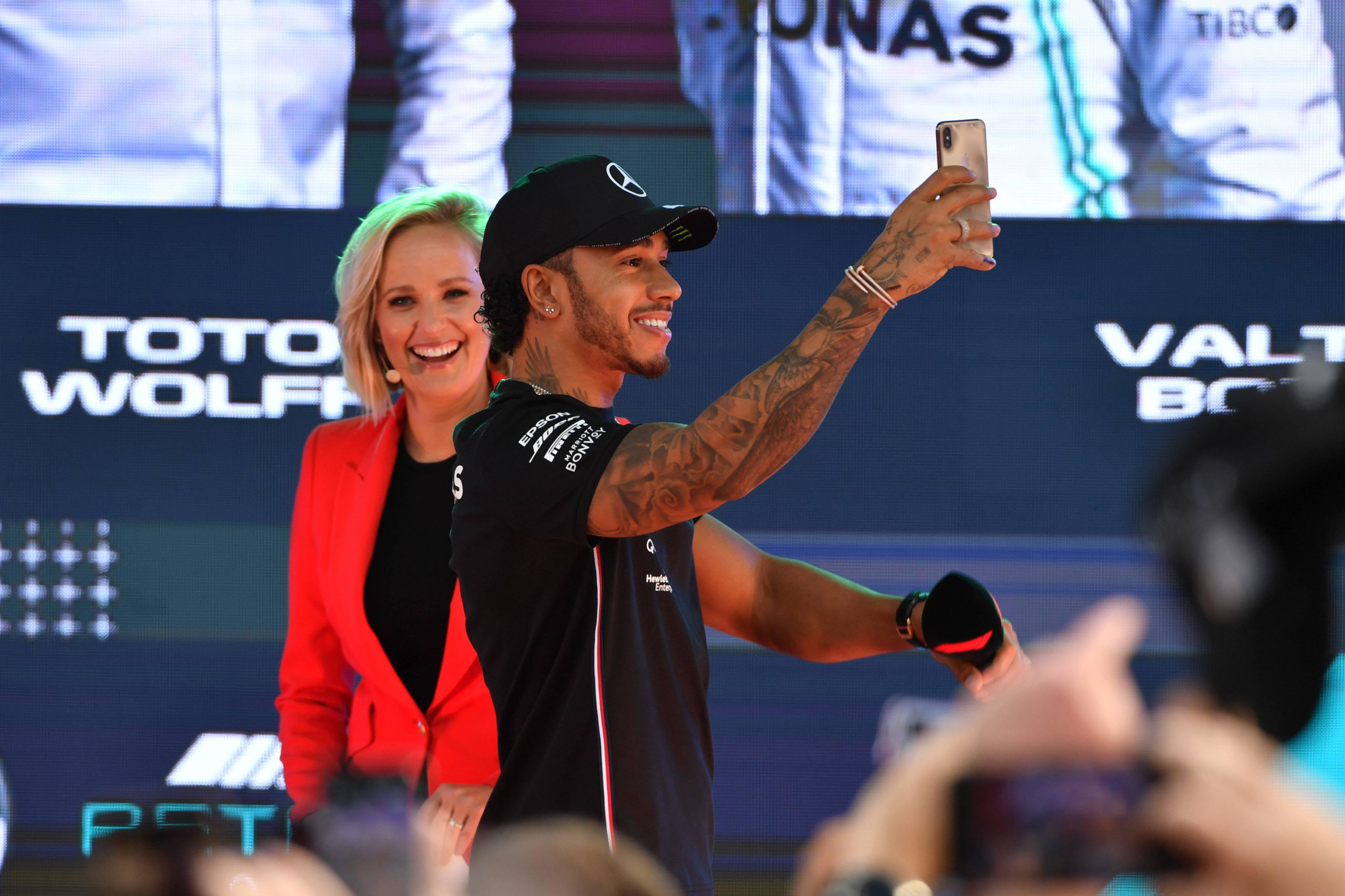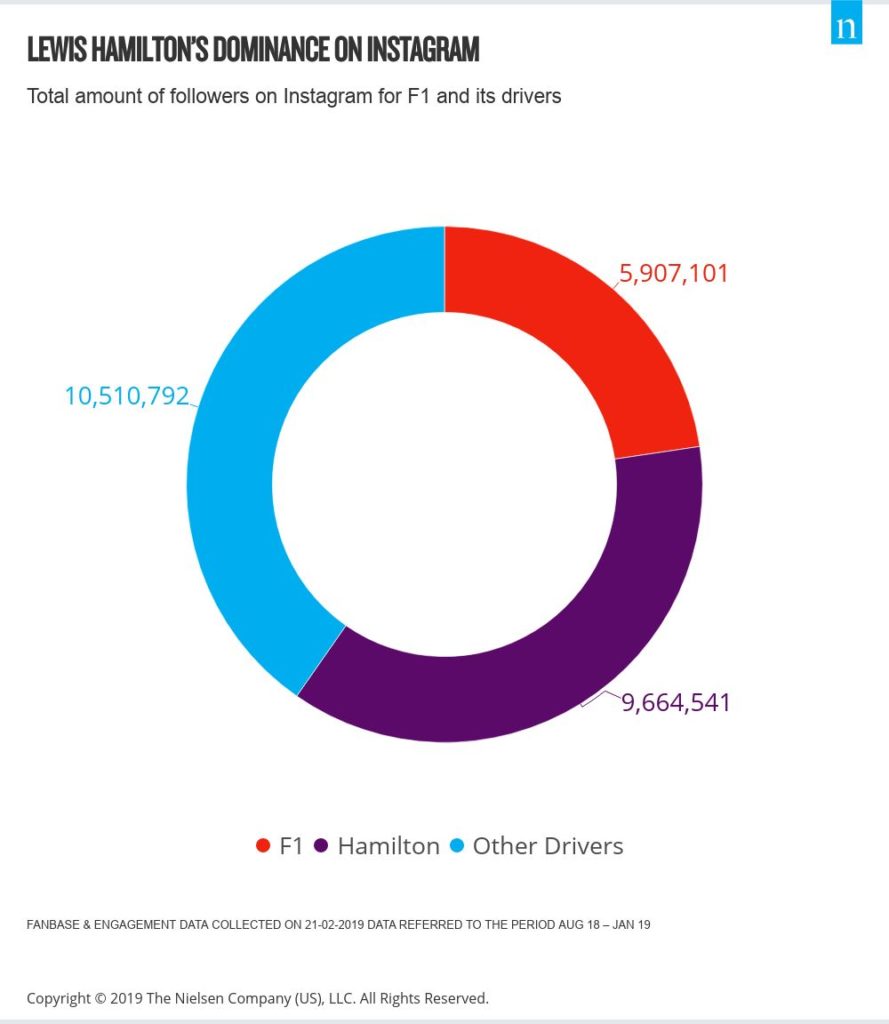
Lewis Hamilton’s profile makes him undeniably one of the most important commercial factors for F1 this season. In the first of a two-part series looking at the numbers that are driving Hamilton’s marketability, we take a look at just how big a fan base he has, and how influential a spokesperson he has become.
Today, fan interaction exists predominantly online, something especially true in the case of a global sports series like F1. The huge draw athletes, players and in this case, drivers have on growing engaging fanbases often supersedes that of the team they are contracted to.
The Scale of Hamilton’s profile
In five-time and reigning World Champion, Lewis Hamilton’s case, however, he is in a league of his own. In terms of this social media standing, Hamilton’s following dwarfs that of F1 itself and on Instagram, currently at 9.6 million followers, is almost as big as every other driver on the circuit combined. The driver with the next biggest following on Instagram is Max Verstappen, who has 1.9 million followers.
Who is following?
Diving deeper into Hamilton’s Instagram following, the largest section of his fanbase is made up of 25-34 year old males. And whilst the vast majority of his posts are in English, the largest proportion of his Instagram following comes from Brazil, (1.7m), followed by the US (1.3m) and then the UK (1.0m).
Students make up the biggest proportion of Hamilton’s fan base. 27% of which attend or are enrolled in High School, 67% University and 5.5% are Postgraduates. And it’s this that will perhaps make Hamilton’s fanbase even more valuable. Not just in terms of the sport more widely aiming to appeal to a younger demographic, but also for brand sponsors.
“Lewis Hamilton’s young and growing fanbase is by far the most important in the sport* (see note below). Not just in terms of the scale, but the people that he is interacting with on a weekly basis,”
“He has, over the last few seasons, cemented his position as a unique figurehead within F1 with a scale of influence far superior to that of his fellow drivers, teams and even the league system, something we just don’t see in many other sports. For brands looking to invest in F1, he offers a unique and valuable alternative to the traditional activations.”
Salvatore De Angelis, European Head of Digital, Nielsen Sports.
Growth of profile
Over the six months monitored (Aug 2018 – Jan 2019), Hamilton has recorded the largest fanbase growth on Instagram of any other sports personality* (the “Instagram follower-base” range: 5-13M) globally, based on both percentage and absolute numbers. In that time, he has added over a third more followers to his already impressive fanbase. This incredible growth, which equates to 2.6 million more followers, puts him ahead of Tom Brady (23%), Anthony Joshua (22%) and Rohit Sharma (19%).
Optimizing your influencer selection process
Influencer content is becoming increasingly valuable to brands, and global superstars like Lewis Hamilton may be one route to generating brand exposure and branded content. However, less well-known stars also represent a huge opportunity. Rights holders and brands can benefit from athletes’ geographical provenance to unlock commercial opportunities aiming to build and engage a “glocal” digital community.
Along with sporting megastars like Hamilton, we’re beginning to see non-athlete sports influencers grow in power too, and with content pushed via social media still driving significant value for sponsors, it only makes sense that brands are beginning to consider working with non-athletes as much as the global superstars in sports. The social media ecosystem gives an unmatched set of data which enable brands to put together the right influencer mix for each objective, in a context where influencers’ fan base composition may change quickly.
Nielsen sports’ influencer selection model gives a holistic view of which influencer best fits a specific brand campaign. The model consists of four important pillars; reach, relevance, resonance and return. By combining different data sources and tools, Nielsen Sports can better define the most suitable influencers by category further aiding commercial decision making for brands.
